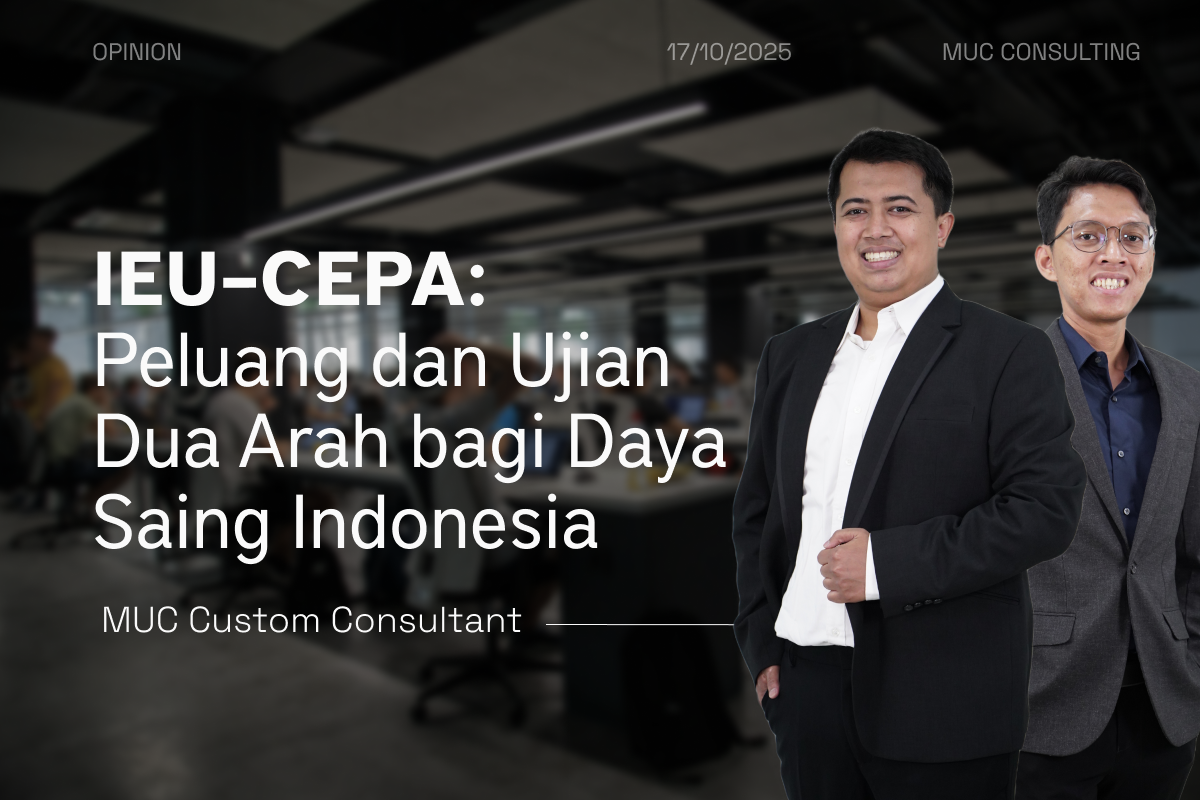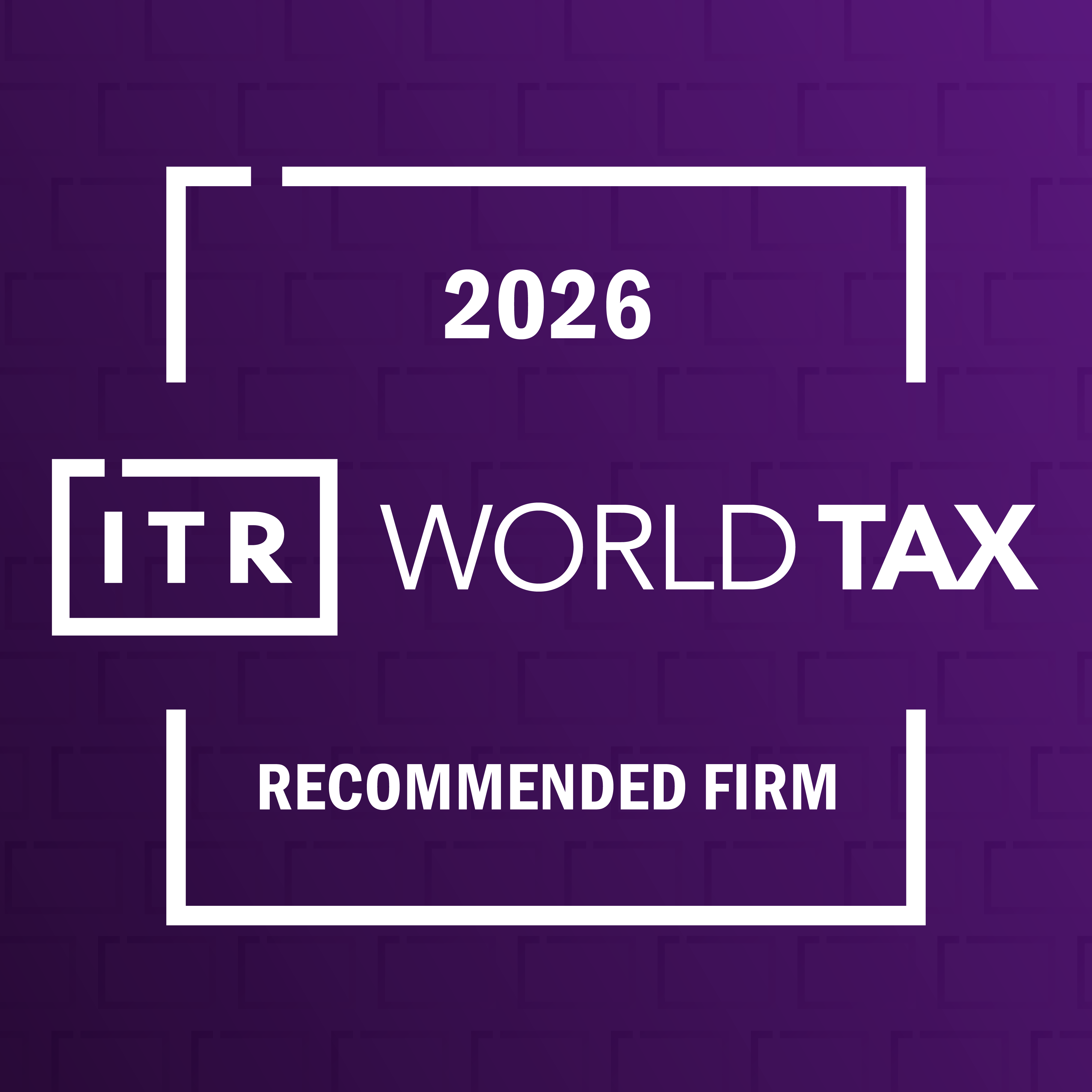IEU–CEPA: Opportunities and a Two-Way Test for Indonesia’s Competitiveness
Tim MUC Customs Consulting
|

For business actors, this is good news. The European market, which has long been difficult to penetrate, is gradually opening up. Import tariffs are being reduced, and investment opportunities are strengthening. However, as with any major trade agreement, the benefits are not one-sided. Behind the exciting export potential, there are also import-related challenges that must be carefully considered.
Export Market: Big Promises with New Conditions
On the export side, the CEPA promises tariff elimination or reductions for Indonesia’s key products such as palm oil, textiles, fisheries, and processed agricultural goods. Our products are becoming more competitive in the large, high-purchasing-power European market.
However, the European Union is introducing a new regulation that has caused concern among businesses: the European Union Deforestation Regulation (EUDR). This regulation requires all commodities entering the EU market to be free from deforestation practices and to have a traceability system all the way back to the origin of raw materials.
At first glance, this seems burdensome, especially for smallholder farmers and MSMEs. Yet in the context of CEPA, the EUDR should not be seen as an absolute barrier, but rather a new standard that can serve as a driver for adaptation.
CEPA negotiations have actually opened space for a more proportionate application of the EUDR. The EU is starting to consider risk categorization by country, and Indonesia is now classified as medium risk, not high. This means that the verification process can be simplified—without compromising the core principle of sustainability.
For MSMEs, this is the moment for transformation. Support for supply chain digitalization, such as traceability systems using geotagging and ISPO/SVLK certification, can turn EUDR compliance from a burden into a value-added advantage. Environmentally compliant products will have stronger bargaining power in the global market. In other words, EUDR no longer needs to be feared, as long as it is addressed with adaptive strategies and concrete government support.
Import Side: Efficiency Opportunities, Competitiveness Risks
If exports open the door outward, imports are the equally important entryway. CEPA facilitates the inflow of raw materials and machinery from Europe with lower tariffs, good news for Indonesia’s manufacturing sector, which is undergoing transformation.
German textile machines, Italian food processing equipment, and Dutch clean energy technologies are now more accessible at reduced costs. This means domestic production costs can be lowered, and the quality of national products can be improved.
However, on the flip side, finished goods from Europe, such as cars, cosmetics, and processed foods, will also enter the Indonesian market more easily. This poses a real challenge to local industries that are not yet fully efficient. The government must ensure that sensitive sectors are not exposed directly to competition without an adequate adjustment period.
Moreover, the increase in import flow demands readiness from the national customs system. Aspects such as product classification, customs valuation, and post-import monitoring need to become more transparent and digitized. Without reforms, trade liberalization will merely extend port queues rather than improve market efficiency.
Maintaining a Two-Way Balance
The core principle of CEPA is balance. Exports expand market access; imports enhance efficiency. Environmental challenges like the EUDR and industrial challenges such as reduced import tariffs should not be seen as obstacles, but rather as catalysts for reforming national trade and production systems.
To maintain this balance, four key steps are essential:
- Use imports as industrial leverage, not dependency. Raw materials and machinery from Europe should drive downstream processing and efficiency, not simply increasing the volume of consumer goods.
- Modernize customs and logistics. Export-import services must be fully digital and integrated across agencies to ensure that CEPA’s tariff benefits are fully realized in practice.
- Support MSMEs and smallholder farmers in adapting to the EUDR. The government can provide shared data platforms, certification financing, and digital assistance. Compliance should be seen not just as an obligation, but as an investment in the future.
- Negotiate mutual recognition of standards. European recognition of ISPO, SVLK, and SNI would reduce the burden of dual certification and facilitate smoother goods movement.
The Next Level Test
In the end, CEPA is not merely an economic agreement; it is a test of the maturity of Indonesia’s trade system. If leveraged wisely, CEPA can become a driver of industrial transformation and sustainability, not just a tariff eliminator.
The EUDR, initially perceived as a threat, can instead serve as a mirror, prompting improvements in supply chain governance and strengthening the global image of Indonesia’s green products.
The success of CEPA will not be determined in the negotiation rooms of Brussels, but in our warehouses, factories, ports, and plantations. That is where the real test lies: whether Indonesia is ready to graduate as an efficient, sustainable, and globally competitive industrial nation.
Disclaimer! This article is a personal opinion and does not reflect the policies of the institution where the author works.


